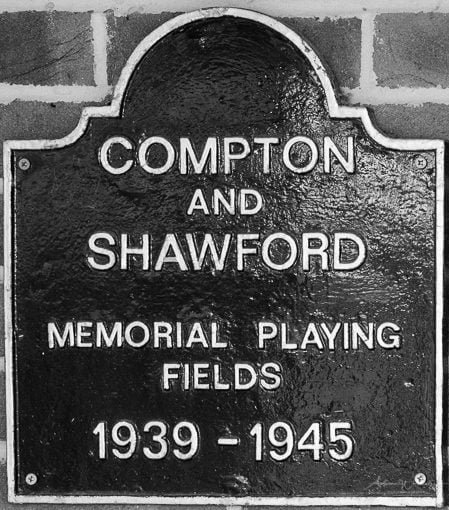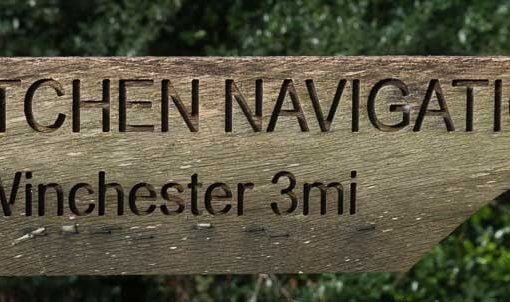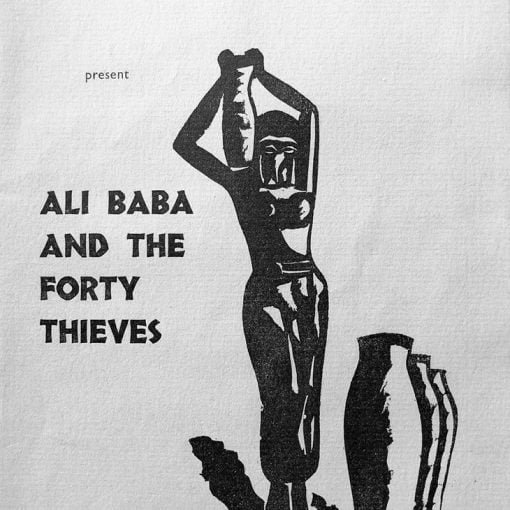For Compton & Shawford Local Historical Society.
By PHIL RAWLINGS February 2020
Table of Contents
Introduction
12th February 2020
Please find enclosed a hard copy of my ramblings about growing up in Compton in the late 50s and early 60s, much of which I am sure is irrelevant to you but there may be an odd recollection that may be of use to you at some future time.
It has taken me a lot longer to complete this than I had expected as I really wanted to close out some of the things that I have written about. Despite many letters [always enclosing a SAE] and allowing up to six weeks for a reply, however in many cases replies have not been forthcoming- Hence the long delay in completing as far as I can.
In particular I wanted to close out:
- Confirmation that the annex to Chequers was used for a short time an outpost surgery and prescription collection point.
- The year that the shop closed and was converted into a dwelling.
- The year that the open sewer was removed.
- I spent a lot of time at Orchard Close when my Mum was housekeeper and helping my Dad when he was looking after the garden, in particular cutting the grass in the orchard. I can recall my Mum telling me about [what I believe was Mrs. Richardson’s grandson] Simon Richardson being lost on an expedition aboard the En Avent which he skippered in 1977 to Smith Island one of the South Shetlands in the Antarctic. Despite finding a copy of the “Quest of Simon Richardson” by his mother Dorothy Richardson, published in 1986, I have been unable to establish if he was related to Mrs. Richardson at Orchard Close. Mrs. Richardson always took her holidays in Portugal.
- At Shawford along the path by the River ltchen heading towards the road down to the “Malms”, a house two-thirds of the way along before the railway bridge had a garden taken up with a model village made of matchboxes [the remains of which can still be seen today] the wall around the garden is also made from matchboxes. Villagers would save their empty matchboxes and give them to [Mr. Abraham?] to enable him to continue with his model building. I would have liked to have found out more about the model village as it was a well known and popular place to visit at that time.
In closing, I hope you find something of interest and wish you well on your ongoing research into the history of Compton.
Phil Rawlings
Growing up in Compton in the late 1950s and early 1960s
In the late 50s and early 60s a lot of changes were taking place in the village of Compton.
The new council houses in Martins Fields had just been completed [to the loss of the allotments in Atwoods Drove].
We moved from number one Churchfields in Twyford into the last one in Martins Fields, number 36, in November 1956 when I was 8 years old.
Our near neighbours were Percy Cole the local postman and cub master in number 27 and Ray Wilmshurst at number 29 who would go on to be elected to the parish council in 1963, a post he would hold for the next 38 years.
The new Winchester bypass [M3] was in the first stages of planning in 1960 which would lead to significant loss of land on Shawford Downs and Southdown. An extension would be added to the school, a new rector would be installed and a village shop would be built.
So what was it like to live in Compton during that time?



These photos by Tom Threlfall appeared in Austin Whitaker’s 1985 booklet “Compton and Shawford”
School
I joined the school in 1957 a year before the second extension was built to accommodate the influx of children moving into Compton on the new council estate at Martins Fields.
Miss Woods was the headmistress who taught the juniors and Mrs. Roberts looked after the infants.
Some of the local villagers, including the new rector EDG Fawkes who had replaced Mr. Burdett in 1958, and Mrs. Phillips who lived in church cottage on Carman’s Lane would occasionally take a class. Sometimes classes were held in the Scout Hall.
One of the school activities was practising maypole dancing in readiness for celebrating the return of spring on the 1st of May. It was a custom at the school to present each leaving pupil with a book. When I left to join Romsey Road Boys’ School in Winchester I chose a book about stamp collecting which I still have and have been collecting stamps ever since.
Cubs and Scouts
I enrolled into the Compton and Shawford Wolf Cub pack in January 1957 and was warmly welcomed by Percy Cole. Apart from learning the basic skills of the scouting movement, there were many other events to participate, in including the Winchester and District Wolf Cub annual sports competition. I seemed to excel in the 40-yard sack race achieving certificates in 1958 and 1959.
Upon leaving the Cubs I joined the Scout Troop founded and led by the very enthusiastic “skip” Westbrook who lived at Number 29 Atwoods Drove.
He was not only the scoutmaster but actively involved himself with the wellbeing of the village. His son Chris was an accomplished cricketer who went on to play for Hursley Park for many years and established himself as a very talented spin bowler.
Skip Westbrook worked at the railway works in Eastleigh and drove a Morris Minor Traveller which he used with great effect when I used to accompany him in the evenings collecting jumble for the annual sale in the Scout Hut to raise funds. I also helped him to repoint the wall on Compton Street at the entrance to the churchyard. The scouting activities included knot tying, tracking through the woods, camping, and sports events. On one occasion the troop took part in the Gang show held at Winchester Guildhall. He closed each scout meeting by bringing out the boxing gloves and picking two scouts at random to box each other for a round. An annual event was Bob-a-Job week. Doors were knocked asking the local residents in Compton, Shawford and Southdown if they had any jobs they wanted doing in return for a small donation of their choice. On completion the resident would be given a yellow sticker with a blue tick on to put in their window so that they would not be bothered again that week.
Village Amenities
When we moved to Compton in 1956 there were only two facilities available within the village.
For a short while, an annex at the side of Chequers at the entrance to Compton Street was used as an outpost surgery and a box on the wall outside was used for people to collect prescriptions delivered from the main surgery in Twyford. The other was a letterbox set into the wall of a house opposite the rectory called Rutland which was demolished in 2010.
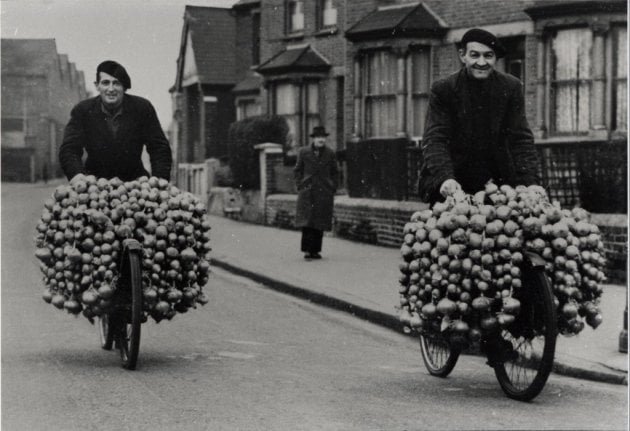
In the spring ”onion johnnies”, French itinerants from Brittany, would be seen on their bicycles laden with strings of newly harvested pink onions selling to the villagers. Gypsies would also call around selling wooden clothes pegs.
The nearest shop was Shawford Stores, owned by my uncle Mr. Hugh Pryor up to 1963. Stock was stored in the large cellar below the shop. Various other items from the shop were stored in the adjacent old Gospel Mission Hall which had closed to congregation in 1956. He made bundles of kindling wood in the winter to sell in the shop and sold ice creams on Shawford Downs at the chalk pit in the summer. He also provided a delivery service.
There was also a Bank and Post office and of course the local pub the Bridge Hotel. Milk was delivered by Brown & Harrisons in a battery-operated milk float.
I delivered newspapers and magazines [farming magazines were very popular] which were provided by the Mahony brothers based at the Old Forge in Queens Street Twyford. They would drop off the papers to the bus shelter at Compton at 6. 30am where I would collect them and deliver accordingly. It was a big round and very heavy to carry on my bicycle. on Saturday I also had to collect the money in a leather shoulder bag which could be very time consuming before I cycled round to Twyford to have everything checked and balanced before I could collect my payment.
Every Saturday evening two brothers Tom and Ginger who owned Sandyfields Nursery at Colden Common would bring their old army lorry around the village to sell fruit and vegetables and treats like Corona Lemonade and Smiths Crisps which contained a little blue twist bag of salt. Compton was set to get its own shop and Post Office when planning permission was granted late in 1957 for erection at the corner of Attwoods Drove. An additional bedroom and garage were added in 1965. Mr. and Mrs. Bringlow ran the shop and had a very talented son called Clive who played the piano with great skill and I would often listen to him playing in the flat above the shop.
Transport

Hants & Dorset ran a regular and very well used bus service [number 47] between Winchester and Southampton which stopped at the bottom of Compton Street. King Alfred Motor Services was a family run business set up in 1920 by Mr. Bob Chisnel and based in Chesil Street and Bridge Street in Winchester until they ceased operating in 1973. King Alfred ran the only service from Winchester [numbers 1 & 2] which stopped at Compton and went on to Shawford and Twyford and on out to Fishers Pond and Colden common. In June 1963 KA had their most serious accident since double-deckers were introduced in 1942 when a number 2 service coming down the hill to Shawford went too much to one side through the bridge under the railway and wrecked its roof and upper deck windows. Fortunately, there were no passengers on the upper deck and no injuries were sustained. The only other accident here was in 1962 when a similar bus hit the bridge but the damage caused was far less serious.
This route was withdrawn with only one weeks notice, when the last bus arrived at Shawford at 6.45pm on Saturday 12th April 1969. A number of Shawford residents including Mr Houghton the landlord of the Bridge Hotel marked the occasion by making a surprise presentation to the crew with a scroll reading;
“The bus travelling public or the villages or Compton, Shawford, Twyford, Colden Common and Fishers Pond wish to thank the King Alfred drivers, conductors and conductresses For the service they have provided For the last 50 years”
Steam trains were very much alive at this time both with passenger and mixed goods traffic running through a busy Shawford Station with the Bournemouth Belle being the highlight to spot. I spent many hours train spotting on the station and was always warmly welcomed by the long-serving Station Master known as “Pudding” Stratton who lived at Northfields in Twyford. [He would be on duty when my dad came home on leave during the war]. He was a very likeable and friendly character. He did have a habit which used to put my teeth on edge of constantly trimming his fingernails with a penknife as he sat on the platform waiting for the trains to come through.
I was also lucky enough to spend a lot of time [daytime and nights] in Shawford Junction signal box with my friend Clive Timpson who lived next door to the Scout Hut at Number 2 Martins Fields.
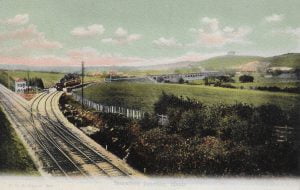
His dad Tom was a signalman at the box. Apart from the main through-line from Southampton to London, the line branched off on a curved path directly onto the 33 arches of the Hockley viaduct and on to Newbury stopping off for passengers at Winchester Chesil station on the way. As a single line branch, the driver had to collect a tablet from the signalman to access the line. We not only got to spot the trains but were sometimes allowed to pull the signals and occasionally put detonators on the line to warn of fog. This was a very busy signal box and on summer Saturdays required the services of a booking boy to assist in the recording of traffic and passing times of each train. As part of the Beeching cuts the southern end of the line was closed to passengers on 7th March 1960 and to goods traffic in 1964. The signal box closed on the 6th November 1969.
Farming
Farming, being very active in the village, provided many opportunities for amusement and fun.
When Mr. Godwin retired from Compton Farm Estate in 1953, the estate was bought from the church commissioners by the county council and split up into twelve tenanted farms, six of which were within the area of Compton Street.
Warners Farm off Place Lane with its ancient barns was shared by Mr. Fay and Mr. Cooper who lived in Cox Croft Farm cottage. I was friends with his son Martin and for pocket money carried out many activities on the farm including tractor driving, feeding livestock and plucking turkeys at Christmas time. One time we were on Compton down with Martin’s dad pulling up tree stumps with a chain attached to the tractor when a wasps’ nest under one of the stumps swarmed out and settled on my head stinging me with much vengeance. Mr. Cooper took off the old army coat he was wearing which had brass buttons and began trying to beat them off my head, which was as painful as the stings. He gave me an extra 10/- for my trouble but I have remained terrified of wasps to this day.
Church Farm was managed by Mr. Lowe predominantly as a dairy farm. Parsonage Farm was managed by Mr. Andrews was a delight to play on with his son Ian, exploring the imposing barn which housed animals and chickens in the loft. Many dens were made on the surrounding land and campfires were often lit. Further up a short lane from Atwoods Drove was Yew Tree Farm [mainly dairy] and managed by Mr. Walker. Compton End Farm was managed by Mr. Smith; a lane leading on from the farm towards Olivers Battery was an unmade pathway known as the back track.
Village Life
There were very few domestic appliances in those days. Clothes were washed in a gas copper using a wooden copper stick and large wooden tongs to lift the washing out. The clothes were then put through a hand-driven iron mangle in the garden to remove the water. A coal fire in the front room was the only source of heat and in the winter the windows would freeze over on the inside.
Black and white televisions were scarce until the arrival of “Rent a set” later in the 60s when they became more affordable. Any rare telephone calls would be made from the telephone box outside of the Scout Hut.
Equally, for the children there were none of today’s distractions like mobile phones and computer games so we had to make our own amusement. Cricket would be played on the green at Atwoods Drove [I sometimes sat in the hut outside of the sports pavilion at the playing fields off Shepherds Lane scoring for the cricket club] and football on the patch of grass separating the end houses in Martins Fields.
Apart from exploring the farms, the woods and downs were the main attraction. The nearest access was either Welshers Lane or the path on the open field halfway down to Compton End towards the woods. Midway down this path was a large open surface sewer and, despite the smell, was a place of fascination to watch it working. The sewer was constructed after two parcels of land were purchased from the Church Commissioners for England by Winchester Rural District in August 1953 for the sum of Five Pounds. The largest parcel of land would become Martins Fields. The other was a section of land on which the sewer was built.
Welshers Lane as it is formally known was always known as “Stones Lane”. At the foot of the lane, there was a thatched cottage occupied by the friendly Mr. and Mrs. Stone and their daughter Margaret. There was a well in the garden and electricity was provided by way of a diesel generator housed in a shed. The only other known dwelling on this site was the remains of “Gunvill Cottage” a century ago.
We had a den halfway down the lane and outside the cottage was an abandoned car chassis complete with steering wheel and gear change lever which we frequently played on.
Brown & Harrisons delivered milk to the cottage by driving down the lane and reversing back out onto Compton Street. The cottage was destroyed by controlled burning in the late 60s by the County Council [it being on their land – The County Farms Estate] as it was deemed no longer suitable for human habitation and the Stones were rehoused in a bungalow on Atwoods Drove.
A favourite place to ride a bike off-road was the chalk pits at Southdown with its varied and steep terrain to ride up and down on. My bike had cow horn handlebars and I used to put pieces of cardboard in the wheels to make it sound like a motorbike.
Time would also be spent along the river bank at Shawford and onto the locks catching minnows in jam jars along the way.
One of the characters in the village was an elderly gentleman Mr. Moriss who lived at 24 Martins Fields. He was known as Mr. Bucket as he would walk down to the river at Shawford carrying a bucket and harvest watercress which he would hawk around the village to sell in bunches for the price of a quarter ounce of pipe tobacco. If he caught you riding your bike on the pavement he would try and put his walking stick through the spokes on one of the wheels.
Mum and Dad both worked part-time for Mrs. Richardson at Orchard Close at Compton End, Mum as housekeeper and Dad as a gardener. To save the long walk around from Martins Fields Dad put a gate through to the garden at the end of the garages in Martins Fields. Orchard Close was demolished in 2008
And so it was, that’s how I grew up in Compton at that time. Looking back it was a peaceful and happy time. We made our own fun, respected people and property and enjoyed a varied and unhurried way of life.
Happy days.
A Reader Replies
Reader Ian Stevenson writes:
The series by Phil Rawlings was very interesting but Part 2 contained two unfortunate errors.
The first one was at the end of the second paragraph under Village Amenities. The house referred to as Rutlands, opposite the former rectory with the postbox, was demolished some 50 years ago at the end of the 1960s or early 1970s; it was a small two storey Victorian house that fronted Compton Street. It was situated partially across the present entrance to Fallow Fields and partially on a small portion of the adjacent lawn. In its time the house was Compton’s second post office, hence the post box. Everyone knows where the first post office was through the late lovely Daphne Meller metaphorically blowing her own posthorn at Cherrycroft.
Behind the Victorian house was a large piece of land on which there was a bungalow; this was subsequently converted to a substantial two-storey family residence complete with a sweeping semi-circular drive with entrances and exits into Compton Street, inclusive garages and a swimming pool.
With this construction work the Victorian house/Post office was demolished. When the house was completed it was referred to locally as Buck Palace although the name was Rutlands. Over the years the house had numerous additions built onto it; its owner was a Mr John Mason a director of the local building firm Mason and Co. (Winchester). It was the house that was demolished in 2010 and replaced by Fallow Fields on the same site.
The second error concerns the King Alfred Bus company routes 1 and 2 which were quite separate routes; Number 1 ran between Winchester, Twyford, and Colden Common, and return whilst Number 2 ran between Winchester, Compton, Twyford and Colden Common, and return. Both routes were withdrawn in 1969 as an economy measure.
The writer can remember seeing the Number 2 bus with its roof ripped back after its contretemps with the railway bridge.
The King Alfred fare from Compton into Winchester was always 1d (old money) cheaper than Hants and Dorset (known to all its mates and chums as Pants and Corset). The writer’s introduction to the fare into Winchester was 6d (2½p) King Alfred and 7d Hants and Dorset. This was quickly raised to 7d and 8d respectively and increases thereafter.
Editor’s notes
Phil Rawlings’ memories were serialised in three parts in the Compton & Shawford Parish Magazine issues for June, August and September 2020.
Ian Stevenson’s letter appears in the October 2020 Parish Magazine.
Links
Friends of King Alfred Buses – www.kingalfredbuses.org.uk
Winchester Memories Facebook Group

